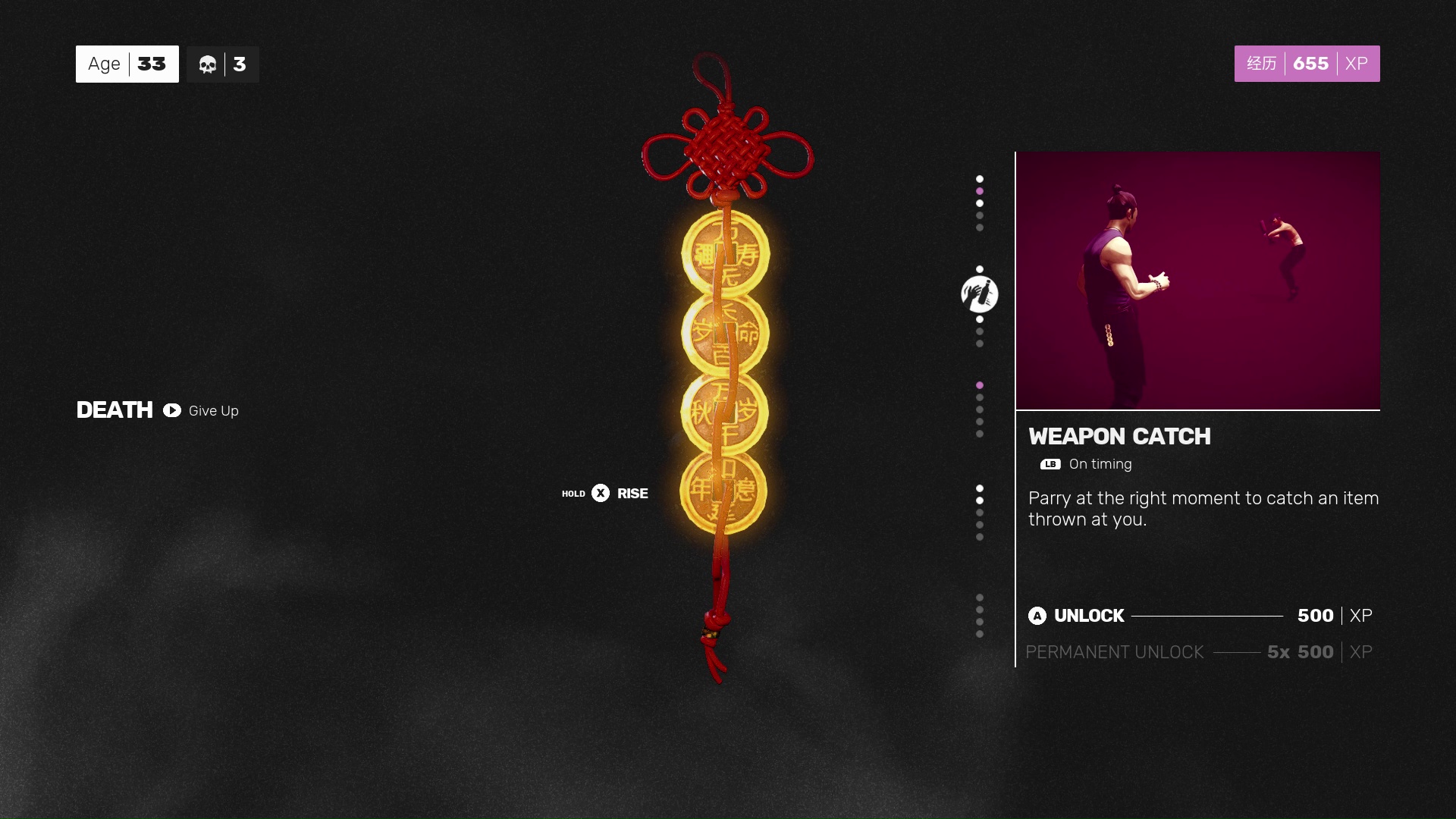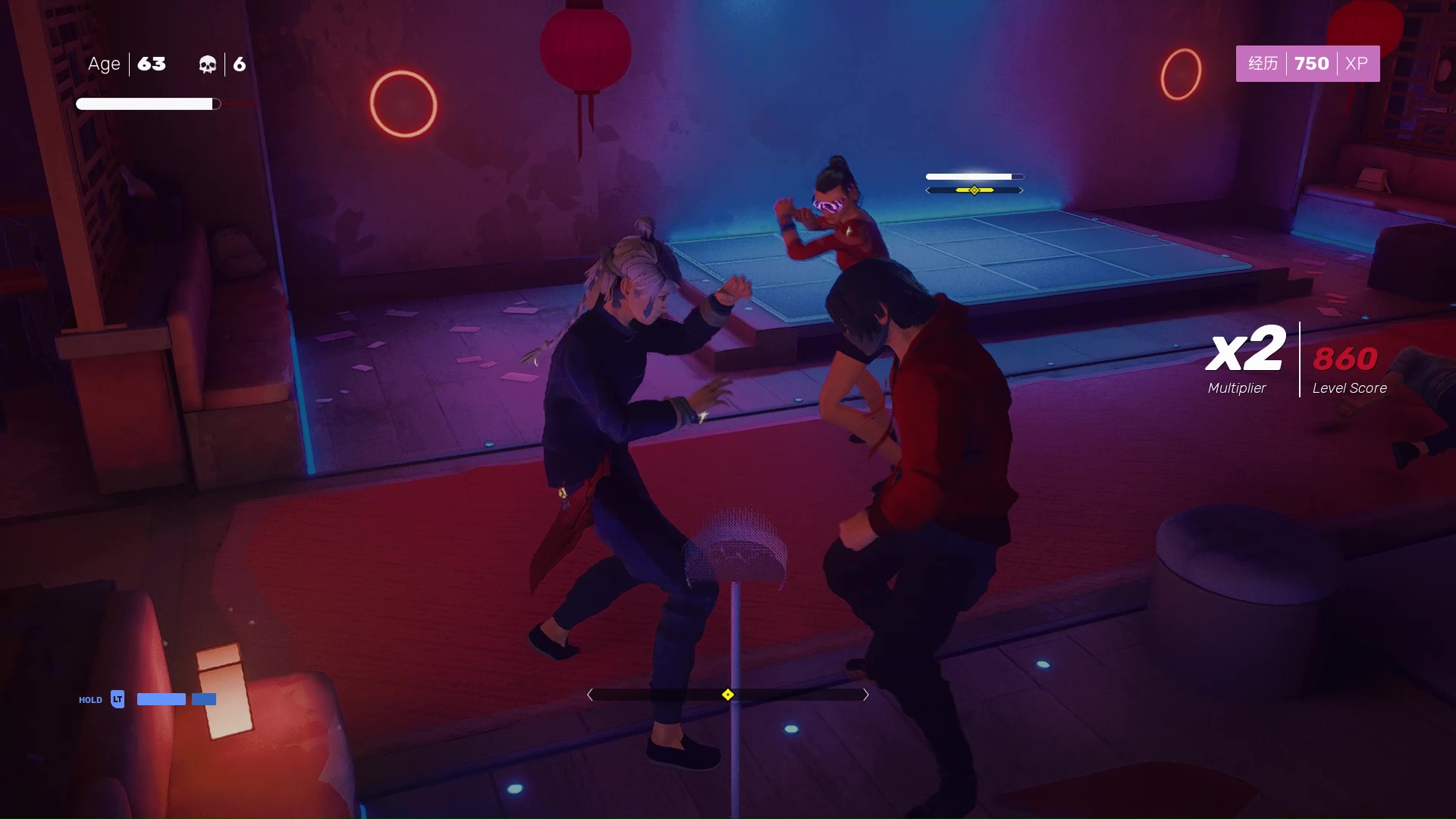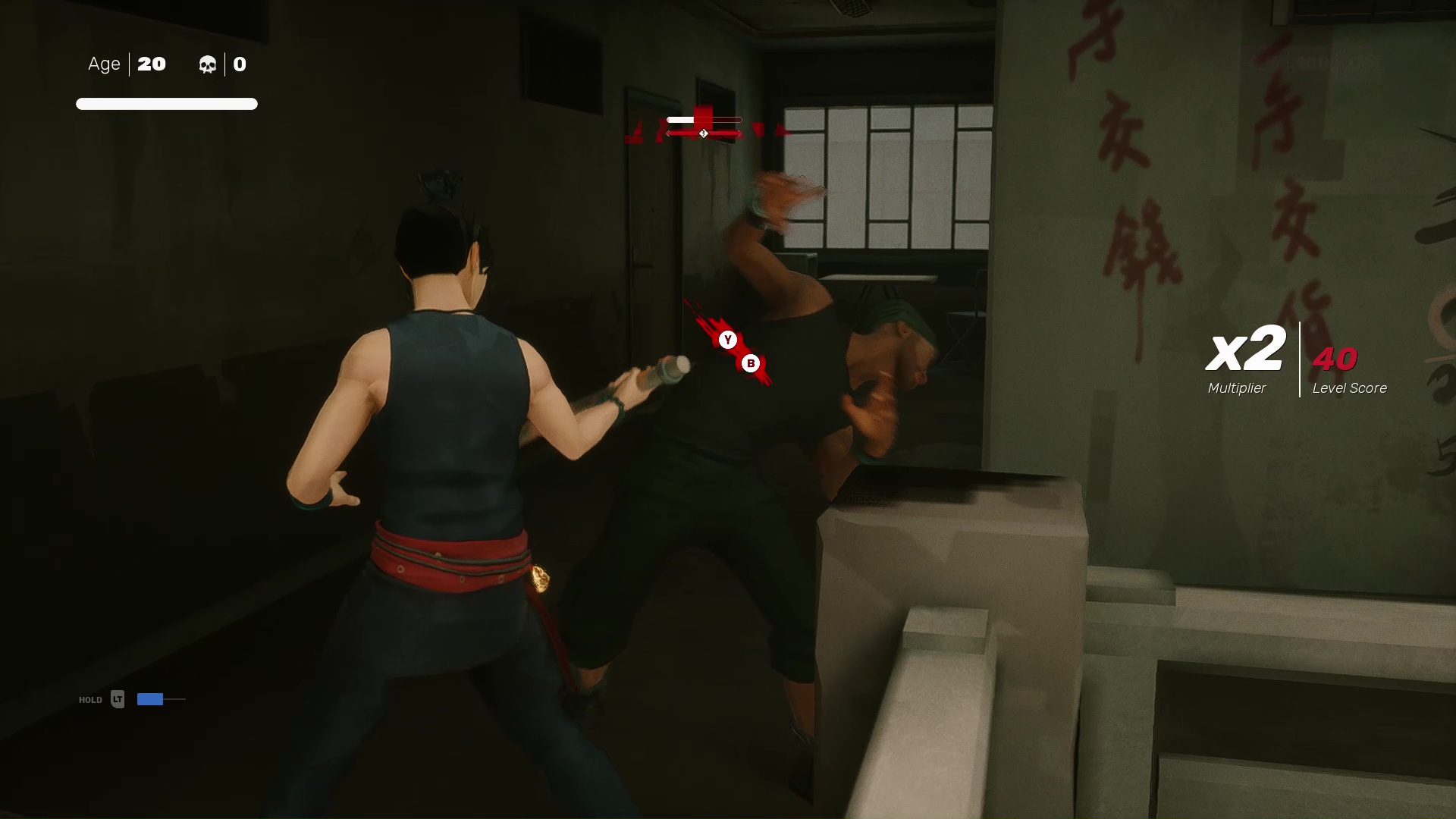Going into it, all I knew about Sifu was that it was on a lot of people’s most-anticipated lists for 2022, and the title suggested that it would have a martial-arts focus.
I wasn’t wrong. Sifu is about as close as a video game has ever come to being an interactive kung fu movie, from the music to the fight choreography to the general atmosphere. It feels like the natural next stage in the evolution of the arcade-style beat-’em-up, with a little added magical realism for spice and just enough plot to keep things moving forward.
It’s also got one of the steepest difficulty curves I’ve encountered in years. Sifu isn’t a typical “Soulslike,” but that’s where your head ought to be at when playing it. It’ll kill you repeatedly, mercilessly, and with a song in its heart.
Sifu Review: An Unforgiving Journey of Revenge
Set in a vaguely modern, vaguely Hong Kong-esque city, Sifu starts when Yang and his four idiosyncratic followers storm into a martial-arts school and massacre everyone inside. This includes the schoolmaster’s child, a nameless 12-year-old whose sex is determined by the player. They only survive due to the effects of a mysterious talisman.
Eight years later, that child has been obsessively training to get their revenge. Yang and his crew have gone on to pursue their own endeavors throughout the city, and it’s your mission to go smack the taste out of every mouth that stands between them and you.
That makes it sound easier than it is. Sifu is like a Jackie Chan movie if Chan’s character didn’t have his trademark superhuman resilience. In Sifu, every stray hit has a measurable impact, and it’s very easy to die, especially when you’re outnumbered. Even the most basic of thugs can and will beat the hell out of you, especially if they score a knockdown.
Every time you run out of health, your talisman can resurrect you, but it only has a set number of uses. More importantly, every death ages your character. The older you get, progressing from a young punk to an elderly master, the shorter your health bar becomes and the more damage you do. If you get anywhere near age 80, though, or if you burn all the lives on your talisman, your current run is over.
It’s an interesting push-pull, but it doesn’t work very well. Getting hit in Sifu does so much damage by default that there’s no particular benefit to playing as a young character, except that it gives you a slightly better cushion for mistakes.
It feels like a punishment for not getting hit, especially once you start running into tougher standard enemies. The system would make a lot more sense if your character was faster or had a lot more health when younger, which would enable you to treat Sifu like a more typically forgiving beat-’em-up.
Then, as you moved into more challenging content, you’d gradually evolve your character into a textbook old master/glass cannon archetype who’s got the firepower on deck to handle tougher enemies.
You can find a handful of shrines throughout each level that can boost your stats, provide bonuses, or reset your death counter. You also earn experience with each KO, which can be spent to unlock new moves and skills, with the option to permanently unlock them for every subsequent run if you can afford to purchase them multiple times at once.
None of that actually makes Sifu easier, though. It’s a game that demands and expects perfection, and it offers next to nothing in the way of cheap victories.
One Quarter, No Brakes
If Sifu reminds me of any other kind of game, it’s the experience of trying to clear a classic arcade quarter-muncher like Final Fight or Turtles in Time on a single credit. It places the same emphasis on knowing each map, mastering your abilities, and getting through each fight with frame-perfect reactions.
There, it was dodging all the cheap ambushes and unfair boss attacks; here, it’s knowing enemies’ patterns, being able to dodge or parry them on reaction, and figuring out how to most efficiently clear out specific crowds.
That does make your first trip through any stage in Sifu frustrating, as you don’t know the score yet. Bosses have unpredictable patterns, groups of enemies love to surround you, and every stray corner of a map could hide a new combat encounter, sometimes with a surprise miniboss.
You can get a few easy knockouts here and there with a stealthy approach – you regain a little health whenever you finish an enemy off, so finding an unaware lone thug is Sifu‘s equivalent of a hidden medkit – but those are few and far between.
On the other hand, Sifu never really changes its approach, so you can memorize each map and use that knowledge to your advantage. Once you’ve got a good idea of what’s happening next in any given stage, it’s just a question of honing your approach. Sifu is a game about putting in the work.
That being said, I’m not sure Sifu is as mechanically tight as it needs to be. It’s got a lot of moves, such as parries and special attacks, that don’t come out as reliably as they have to, which is devastating in a game where your survival can hinge on frame-perfect reactions.
This is the type of criticism that I least like to make, because I’m not sure if it’s my relative inexperience talking or if it’s an actual flaw. It’s possible I’m just doing it wrong, but after a lot of practice, I feel fairly comfortable saying that Sifu‘s controls aren’t as precise as the gameplay needs them to be.
To some extent, I think it’s because a lot of Sifu‘s advanced motions are directional inputs like a fighting game, rather than more traditional button combinations. You can learn to work with it, but it makes the process of learning Sifu‘s ropes harder than it has to be. It’s very much a game that expects you to run before you can walk.
The Rest of the Package
You really get the feeling from playing Sifu that it, like its protagonist’s life, is focused to a specific point. The graphics and music are both simple but effective, with occasional highlights, while the environments have a nice amount of lived-in clutter but are generally linear, albeit with the occasional unlockable shortcut.
Even a fight that you’re losing is fluidly animated. The tutorial in particular is well-executed; you play as Yang on his attack on the school, and he comes equipped with a full assortment of the combat skills you’ll have to gradually unlock throughout the rest of the game.
Sifu, in general, like the arcade games I’ve been comparing it to, is something that’s built to do one thing. It’s challenging, occasionally brutal, and has that one-more-time addictiveness baked in where you always know you could probably do something a little better if you tried the last level again.
That kind of climb isn’t generally my sort of thing, though. It feels like a strong, natural evolution from something like Streets of Rage, mixing strong visuals with a demanding but satisfying combat system. But the difficulty curve’s too steep for me to really enjoy it.
I’d have more fun if perfection was a bonus, not a requirement. If you’re hoping to pick this up in anticipation of it being the martial-arts brawler of your dreams, you should know that it takes a long time before you’re good enough at it to get to that point.
Sifu Review — The Bottom Line
Pros:
- Controls smoothly.
- The graphics are simple but evocative; they’ll age perfectly.
- Usually tough but fair.
- One of the coolest tutorial levels in years.
Cons:
- No casual play allowed.
- Some of the Street Fighter-style move inputs don’t work reliably.
- Some important mechanics aren’t explained well.
- The aging system isn’t well-balanced.
Take my opinion on this with an extra grain of salt. I can see its appeal, as well as the work, talent, and skill that went into the game’s production, but I’m rarely in the mood for this masochistic of an experience.
To my mind, this has “cult classic” written all over it, and players who take the time to master Sifu will make it sing in a way that I can’t imagine. It’s a big step forward for brawlers in general, which doesn’t just ape the ’90s beat-’em-up the way that a Mayhem Brawler or Fight’N’ Rage does, but actually adds onto it. Sifu has a lot going for it, but its questionably fair difficulty curve and the relative looseness of its controls both make it hard for me to recommend to a general audience.
[Note: Sloclap provided the copy of Sifu used for this review.]











Published: Feb 6, 2022 09:09 pm